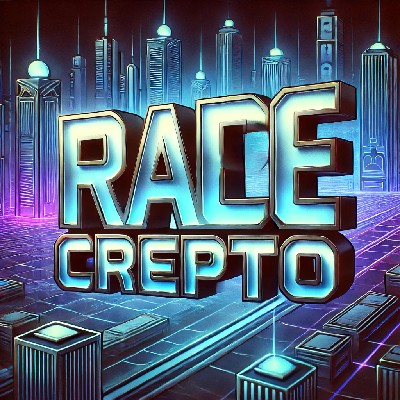Bette Chen Started Acala After Leaving Her Safe Job
While most people are still trying to understand what blockchain is, Bette Chen has already rolled up her sleeves and helped build it from the inside.
Rather than just being a spectator, this University of Auckland graduate chose an unusual path. Who would have thought that her interest in reading the Bitcoin whitepaper would be the turning point that changed the entire direction of her life.
Initially, Bette was just an ordinary software engineer. She worked at a technology company, went through a routine, and had a fairly stable future. But on the other hand, her curiosity about the world of decentralized finance grew.
She then made the decision to pursue an MBA, going all the way to the Fuqua School of Business at Duke University. This combination of technical logic and business instincts is what later became a strong foundation when she entered the crypto industry.
After her MBA, Bette did not immediately build an empire. She started from the bottom again, this time focusing on products that bridge technology and finance. Together with her team, she founded Laminar—a platform for synthetic assets and margin trading.
In 2019, Bette and her colleagues from Laminar and Polkawallet decided to form Acala Network. Their vision was simple but ambitious: to create a cross-chain DeFi hub on the Polkadot network. In simple terms, think of Acala as a ‘digital bank’ in the crypto world that can be accessed across networks, complete with stablecoins , staking, and a DEX.
It didn’t take long for Acala to steal the show. In November 2021, they won the first parachain slot on Polkadot via a crowdloan with 32 million DOT backing. If converted, it was worth more than $1.3 billion at that time. That’s an incredible amount, and it’s clear evidence of the community’s trust in Bette and her team’s vision.
However, no journey is completely smooth. In August 2022, Acala faced a major crisis. A misconfiguration in the liquidity pool caused 3 billion aUSD to be minted that shouldn’t have existed.
Rather than avoiding or blaming the team, Bette took an active role in solving the problem. She led the community to track down and burn the misminted tokens, and restore stability to the network. It’s not just about technicalities, it’s about trust. And more importantly, it’s about leadership.
In a crypto industry often filled with false promises and fickle projects, Bette’s approach feels refreshing—transparent, responsive, and drama-free.
Furthermore, Bette doesn’t merely write code in the background. She also actively speaks on forums, podcasts, and social media. On the X platform, she often shares her views on the future of DeFi , interoperability, and the challenges of building a cross-chain ecosystem. Sometimes serious, sometimes lighthearted—but always down-to-earth.
What sets Bette apart from most crypto founders is perhaps her rare combination of technical expertise, deep understanding of the market, and a strong human instinct. She doesn’t speak in confusing jargon, but she talks about solutions, opportunities, and responsibilities.
Project Analysis: Immortal Rising 2
Overview: Developed by Planetarium Labs, Immortal Rising 2 is a dark fantasy idle action RPG with Web3 integration. It builds on the success of its predecessor, focusing on decentralized governance and player-driven ecosystems.
Strengths: 40k DAU, stylish combat, guild alliances, and a community-driven approach via $IMT governance. Backed by a growing Web3 gaming trend.
Weaknesses: High team allocation (20%) and dependence on player retention. Competition from other Web3 RPGs (e.g., RavenQuest) could dilute focus.
Opportunities: Expansion into NFT crafting and broader ecosystem features (2025–2026 roadmap) could drive adoption.
Threats: Market saturation, regulatory shifts, or failure to stabilize $IMT post-TGE.
Token Analysis: $IMT
Tokenomics: Total supply of 1 billion, with 9.37% unlocked Day 1 and 48-month vesting for major allocations (team, advisors, etc.). Controlled release aims to prevent flooding, but early unlocks may pressure price.
Metrics: Staking rewards and governance incentives suggest utility, but speculative trading will dominate initially. No hard market cap data yet, but fully diluted valuation (FDV) could range $150–$300M at $0.15–$0.30.
Risks: High team allocation and lack of detailed Day 1 performance data (as of now) make it speculative.
Token Use Cases
Governance: $IMT holders vote on game policies, shaping Immortal Rising 2’s direction.
Staking: Stake $IMT for rewards, potentially in-game perks or Starlight (premium currency).
Ecosystem Transactions: Exchange $IMT for Starlight to craft rare NFTs or items, enhancing gameplay.
Community Rewards: Incentives for participation, likely tied to competitive content.

The coin, produced by the Royal Canadian Mint, is crafted from 99.99 per cent pure Canadian gold and features intricate carvings inspired by Chief Hart’s original cedar panel, The Dance Screen (The Scream Too). Its reverse depicts traditional Haida imagery, including a Shaman, Beaver, Raven, Eagle, Frog, Orca, and Mother Bear with cubs, all connected to the salmon—an essential symbol in Haida culture.
“We are thrilled by the collector interest in this unique coin and delighted that the skill of the Royal Canadian Mint and the talent of Chief 7IDANsuu (James Hart) have been recognized by the buyer of this rare and beautiful 10 kg pure gold masterpiece,” said Marie Lemay, president and CEO of the Royal Canadian Mint.
The coin’s obverse features the effigy of King Charles III, designed by Canadian artist Steven Rosati, framed by subtle sketch lines referencing the original carving.
David Heffel, president of Heffel Fine Art Auction House, highlighted the cultural and artistic significance of the piece: “The profoundly meaningful artwork by Chief James Hart, featured on this exceptional coin, reflects the cultural heritage and artistic traditions of the Haida Nation. This sale represents a new milestone, and we are honoured to see this masterpiece placed in a distinguished private collection.”
Ethereum Medium-Term Outlook
$ETH Ethereum Medium-Term Outlook
This March 2025, $ETH tapped the 300-week MA—a rare event, only seen twice in its history.
The last time was June 2022, smack at the bear market bottom, and now here we are again. Bear or not, it’s tough to argue against this being a major support zone.
That 300-week MA (around $2,400-$2,500 lately, per TradingView data) has acted like a trampoline before—post-2022, $ETH climbed 50%+ in months.
With this touch, a mid-term bounce looks likely 📈—maybe testing $3,200 or higher if momentum builds.
🚨 LEARN THIS CANDLES PATTERNS THEN YOU WILL NEVER FACE LOSSES IN TRADING 💥👇
1. Bullish Chart Patterns (Indicate a potential price increase)
These patterns suggest a higher probability of an upward trend after formation.
Inverted Head & Shoulders – A reversal pattern indicating a shift from a downtrend to an uptrend.
Double Bottom – A ‘W’-shaped pattern showing strong support and a possible bullish reversal.
Bullish Flag – A consolidation pattern with a slight downward slant, often leading to a breakout upward.
Triple Bottom – A pattern with three equal lows, signaling strong support and a trend reversal.
Cup & Handle – A rounded bottom with a small dip (handle), often indicating a breakout to the upside.
---
2. Indefinite Chart Patterns (Can break in either direction)
These patterns require confirmation since they do not guarantee a specific movement.
Symmetric Triangle – A neutral pattern where price converges, with a breakout possible in either direction.
Falling Narrowing Wedge – Typically a bullish pattern, but requires a breakout confirmation.
Rising Narrowing Wedge – Typically bearish, but could also break upwards in rare cases.
Descending Triangle – Usually bearish but can break upwards if strong buying pressure exists.
Ascending Triangle – Usually bullish but may break down if sellers dominate.
---
3. Bearish Chart Patterns (Indicate a potential price decrease)
These patterns suggest a downward trend after formation.
Head & Shoulders – A reversal pattern that indicates a transition from an uptrend to a downtrend.
Triple Top – A pattern with three equal highs, signaling strong resistance and a possible drop.
Double Top – An ‘M’-shaped pattern showing resistance and a bearish reversal.
Bearish Flag – A consolidation pattern with an upward slant, often leading to a downward breakout.
---
Key Takeaways:
Bullish patterns suggest buying opportunities.
Bearish patterns signal potential selling pressure.
Indefinite patterns require confirmation before trading decisions.
Here is the patterns image 👇


 Najniższa cena
Najniższa cena Najwyższa cena
Najwyższa cena 












































